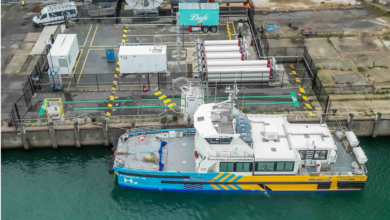Metacon supplies ammonia cracker prototype to Pherousa Green Technologies
Pherousa initiated collaboration with Helbio to construct and manufacture an effective cracker proof-of-concept system.

Metacon’s subsidiary Helbio has delivered the first ammonia cracker prototype to Pherousa Green Technologies AS, enabling hydrogen-based zero-emission propulsion for the shipping industry.
At the same time, Metacon, through Helbio will increase its shareholding from 5% to 10% in Pherousa. Ammonia-to-hydrogen conversion rates greater than 99,3% were achieved irrespectively of load. The hydrogen purification unit was able to remove 100% of the ammonia traces, satisfying the maximum level of NH3 according to ISO 14687:2019 and enabling the feed of an LT PEM fuel cell.
Pherousa has received exclusively licensed rights to market the ammonia-to-hydrogen cracker in the maritime sector worldwide and rights to the required Helbio intellectual property for the ammonia cracking technology for use in the same (maritime) sector worldwide. Metacon holds rights to serve as the core reactor (cracking) modules supplier to Pherousa. Metacon also retains exclusive rights to this technology for hydrogen production from ammonia in all other applications outside the maritime market, including on-land hydrogen storage.
This first prototype under the partnership has now been delivered with very promising results. This breakthrough could allow the shipping industry to use ammonia as a hydrogen storage medium within the global shipping market, providing the industry with a long-sought zero-emission propulsion technology.
Christer Wikner, President and CEO of Metacon said, “The ammonia-based hydrogen economy holds great potential both for decarbonising shipping and for energy storage in general. We are looking forward to taking the next step in the scale-up towards commercialisation together with Pherousa“.
Vasilis Besikiotis, CEO of Pherousa Green Technologies, commented, “Pherousa’s technology for emission-free shipping based on ammonia and hydrogen could present the first truly zero emission and viable solution in the world for the maritime sector.”
